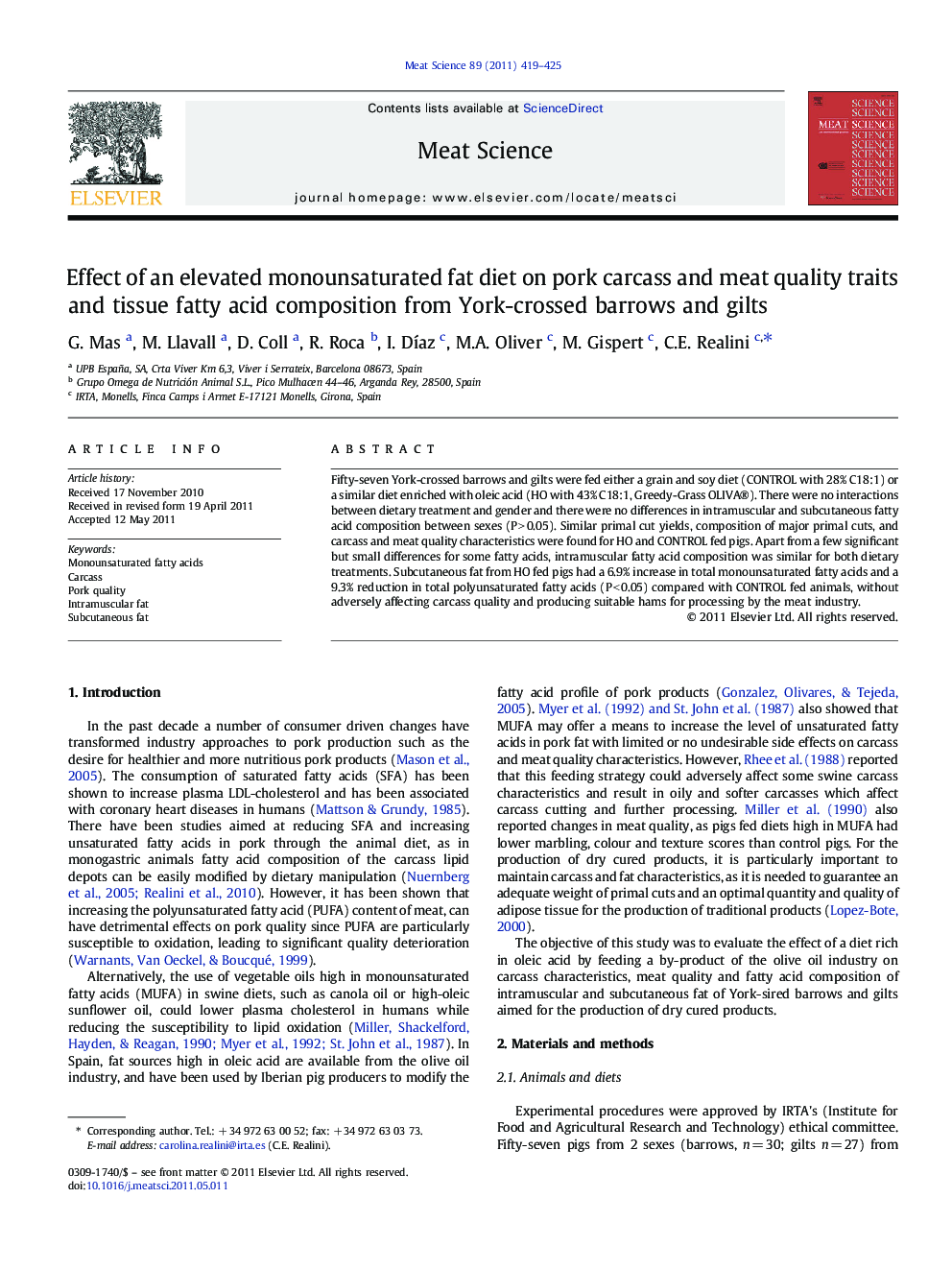| Article ID | Journal | Published Year | Pages | File Type |
|---|---|---|---|---|
| 5792663 | Meat Science | 2011 | 7 Pages |
Fifty-seven York-crossed barrows and gilts were fed either a grain and soy diet (CONTROL with 28% C18:1) or a similar diet enriched with oleic acid (HO with 43% C18:1, Greedy-Grass OLIVA®). There were no interactions between dietary treatment and gender and there were no differences in intramuscular and subcutaneous fatty acid composition between sexes (PÂ >Â 0.05). Similar primal cut yields, composition of major primal cuts, and carcass and meat quality characteristics were found for HO and CONTROL fed pigs. Apart from a few significant but small differences for some fatty acids, intramuscular fatty acid composition was similar for both dietary treatments. Subcutaneous fat from HO fed pigs had a 6.9% increase in total monounsaturated fatty acids and a 9.3% reduction in total polyunsaturated fatty acids (PÂ <Â 0.05) compared with CONTROL fed animals, without adversely affecting carcass quality and producing suitable hams for processing by the meat industry.
⺠Feeding a diet high in oleic acid did not alter carcass or pork quality traits. ⺠The high-oleic diet modified the subcutaneous but not intramuscular fat composition. ⺠Subcutaneous fat from pigs fed high-oleic diet had higher MUFAs and lower PUFAs. ⺠Hams from all pigs were suitable for processing by the meat industry.
